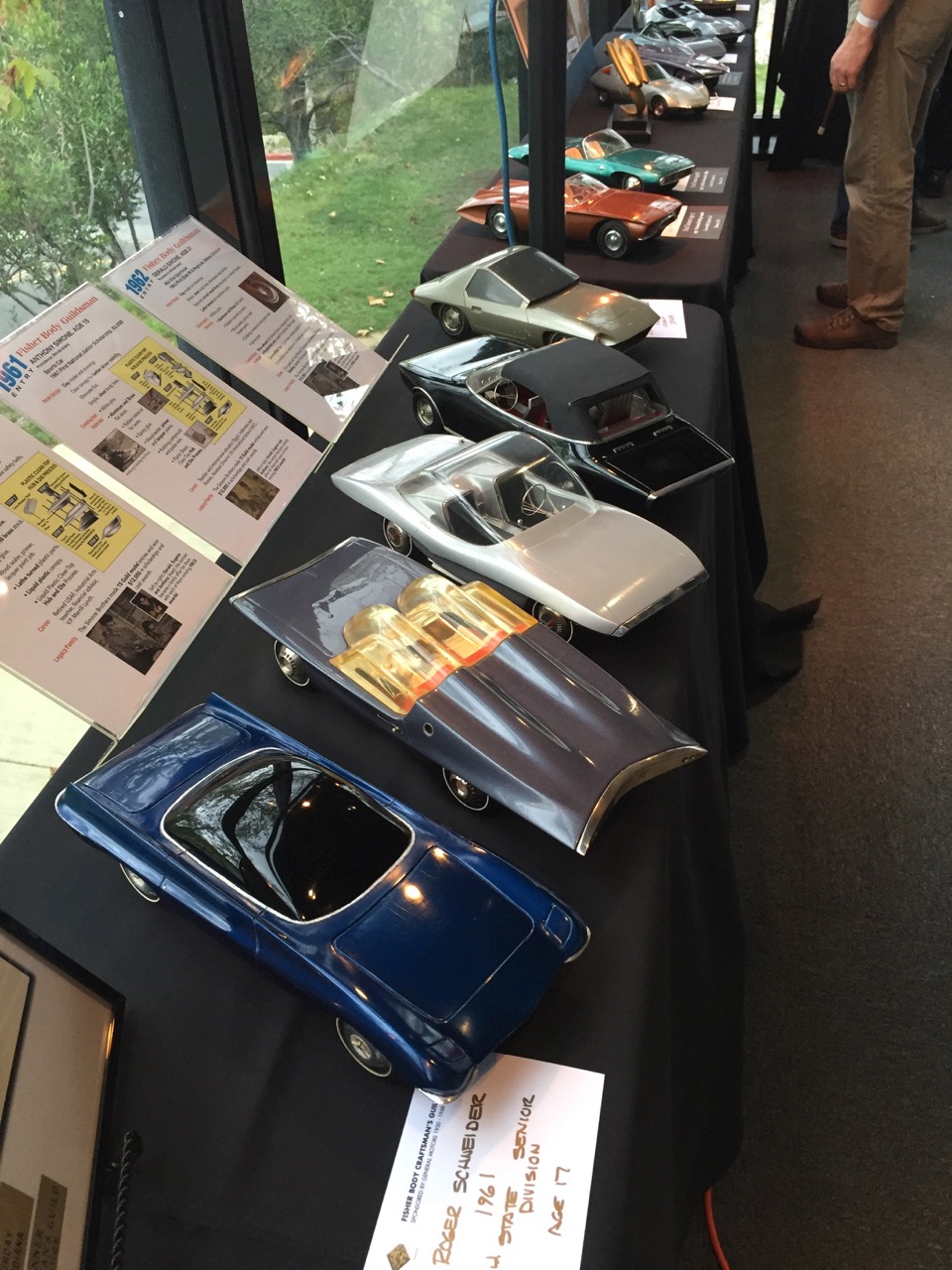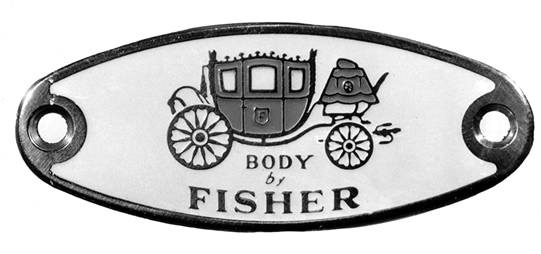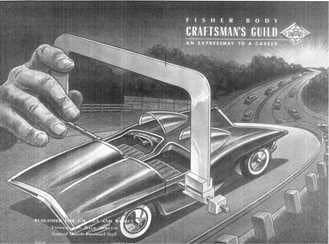
From the beginning in 1930 until 1948, a Fisher Body Craftsman’s Guild entry consisted of the accurately detailed construction of a model of the Napoleonic coach that stood as the logo for Fisher Body, the company that build car bodies for General Motors.
For the next 20 years, young would-be car designers were asked to create home-built models of the cars of the future.

One might spend a year on a model and win nothing, but then spend the next five or six years, making a new one each year, finally mastering the craftsmanship and quality of finish to move your latest design model into the finalist category. There — if it was brilliant — it could win thousands of scholarship dollars, a place in the ArtCenter School and a life difficult to imagine — and a cadre of international friends and colleagues numbering in the thousands as life mentors and a reliable support system.
“Talent” was not an impossible gift to locate, but The Fisher Body Craftsman’s Guild proved it was supported by a level of patience and skills much more difficult to verify without the modeling competition.
In 1987, Automobile Quarterly quoted Virgil M. Exner Jr., who at age 13 was the 1946 first-place national scholarship winner, junior division.
The Fisher Body Craftsman’s Guild, Exner Jr. said, “inspired study and taught patience in the struggle for creativity and understanding of the basic design process. Whether one completed a model or not, won or not, or chose to even pursue design or crafts in any way — it gave youth incentive and opportunity to experience trying a worthwhile and interesting vocation.”
Exner Jr. (his father was chief of design at Chrysler) studied at Notre Dame and designed cars for Studebaker, Ford, Ghia and others.
John L. Jacobus’ book, The Fisher Body Craftsman’s Guild History, quotes another winner, Charles M. Jordan, 1947 first-place national scholarship, senior division.
“As much fun as it sounds, designing and building a model car took many hours of hard work — thinking and drawing ideas; picking the best one to build; searching for clay or the right block of wood; carving or sculpting their design; constantly refining the 3-D design; making the detail parts including wheels; painting the body and assembling the parts; and, finally, packing the model to ship to Detroit with the deadline looming. This was not an easy task for a young inexperienced boy.”
Not easy, but Jordan used his scholarship to study automotive engineering at MIT, to lead various design studios at General Motors and to recreating the Opel brand design in Germany before returning to the U.S. as GM’s vice president of design.
The Guild scholarship competition ceased in 1968, but the camaraderie among the successful competitors remains impressive, irrepressible and will live as long as the last surviving member of the celebrated group.
The recent ArtCenter Car Classic hosted a guild reunion on what can be considered “home turf,” since many of the winners used their scholarships to join the most gifted, most focused and most resilient talent on the planet at the prestigious institution in Pasadena, California.
Photos by Larry Crane



















